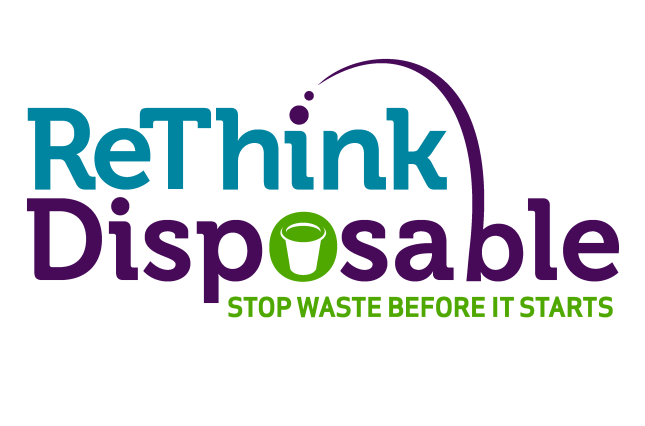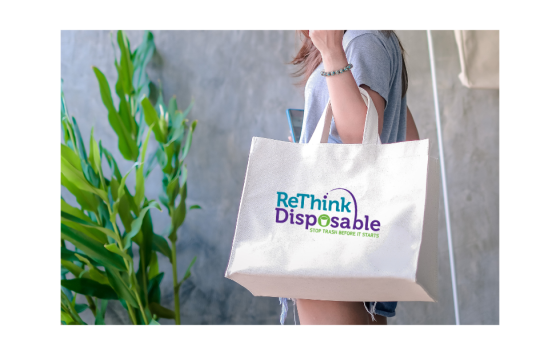
Water is essential to our health, so we need to care about the quality of the water we drink. Depending on our weight and size, according to the Mayo Clinic, women on average should drink 11.5 cups of water per day and 15.5 cups for men.
Many of us are trying to do the right thing by constantly carrying water or stopping to buy water along our busy daily route; but we need to stop drinking water from plastic bottles.
We need to reduce the ever-growing use of single use disposable plastic, as well as lower the amount of micro and nano plastics contaminating our air and oceans created throughout the plastics life cycle. By doing this, we avoid ingestion of chemicals that leach from plastic bottles into the water that we drink. The remedy is simple -- drink water from the tap or get in the habit of carrying glass or metal water bottles when we go out.
Clean Water Action, in coalition of other environmental groups, is working on legislation that requires manufacturers to be responsible for using less plastic in packaging. This will help reduce plastic waste and reduce exposures and harms in front line low income and communities of color where the process of oil extraction, plastics production, recycling and disposal is concentrated.
For every bottle of water created, it takes three times the volume of water to create it and almost 2,000 times the energy to manufacture a bottle of water than it does to produce tap water, according to the Pacific Institute. For instance, if you fill a bottle of water 25% full that is about as much oil it took to make the bottle. On every level, it is better to simply carry a reusable container.
Most plastic water bottles are made from basically two types of plastic. The bottle container itself is made from what is called polyethylene terephthalate, or PET (#1 plastic) for short. The lid is made from a different type of plastic called high density polyethylene, HDPE (#2 plastic), often simply called polyethylene. Each of these plastics has a different melting point. PET melts at 260 degrees Fahrenheit while HDPE is between 140- and 150 degrees Fahrenheit. As bottles of water are transported by ship, rail or trucks the bottles heat up and begin to degrade. The lids especially degrade since their melting point is lower. Furthermore, as the bottles are set out in the heat or cold, they continue to leach chemicals into the water.
As individuals buy these bottles or reuse them, the chemicals continue to be released into the water due to the friction caused by the opening and closing of the lid. Even the bumping of the bottles into each other causes them to further break down. A study conducted by the chemistry department of the State University of New York of Fredonia showed that 93% of the plastic bottled waters tested contained harmful chemicals and microplastics. Only 17 out of the 259 samples contained no microplastics while one bottle of a Neslé Pure Life, for instance, had concentrations as high as 10,000 plastic pieces per liter.
Plastics from production to disposal is hazardous to our health. It hurts our immune system, causes liver cancer, and reduces sperm count in men due to the presence of a chemical called phthalates. The National Institute of Health has linked the presence of BPA (Biphenyl A) to diabetes, obesity, fertility problems, behavior problems and early puberty in girls due to being an estrogen mimicking chemical.
Filling a reusable bottle or cup is both a much cheaper and a healthier option than plastic disposable water bottles. Most big cities have filters to remove pathogens and chemicals from municipal water while the bottled water has less inspections, leading to undetected chemicals in our water, according to Scientific American.
The natural environment is also severely affected by the use of disposable water bottles. Over 60 million plastic water bottles are thrown away in the United States every day, according to National Geographic. It takes these bottles over 450 years to decompose into smaller pieces of plastic according to World Wildlife Foundation. Most of this plastic ends up in landfills. Some is burned in incinerators creating a major air pollution problem affecting our ability to breathe while increasing other health risks. Even our best intentions result in only 5-6% of plastic actually being recycled. “Chemically recycling” plastics (aka pyrolysis and gasification et al) is a failed technology, creates more toxic pollution, and is no better than the creation of the plastic due to the chemicals released in the melting and repurposing.
We can all help ourselves by refusing to drink from plastic water bottles. It will save us money, reduce exposure of toxins in our bodies as well as put less plastic waste in the environment. It is a win-win for everyone! Take action and help save our health and that of our planet.




